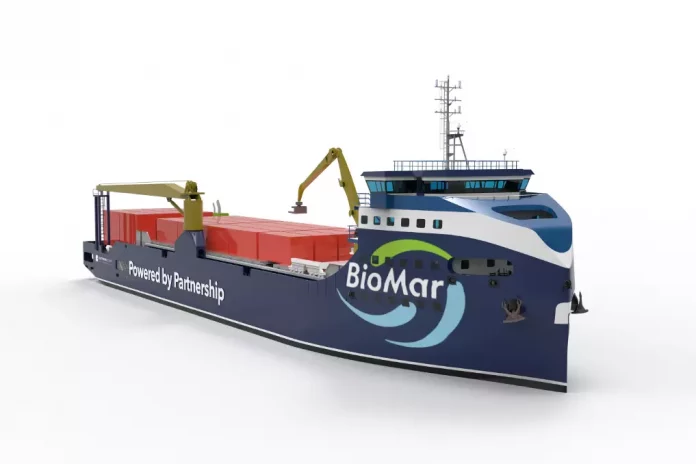BioMar Australia’s Managing Director, David Whyte previously served as the chief operating officer for New Zealand King Salmon.
Aquaculture feed manufacturer BioMar Australia has announced the launch of a new $20 million vessel, the ECOline, set to significantly enhance its fish feed exports to New Zealand.
BioMar Australia’s Managing Director, David Whyte, who previously served as the chief operating officer for New Zealand King Salmon, underscored the growth potential of this initiative.
“Since we started in Tasmania in 2020, we’ve grown to employ more than 70 locals and with the new ship we’ve now invested more than $100 million here,” Whyte said.
“We are both contributing and leveraging off Tasmania’s proud aquaculture industry, and this latest investment is a vote of confidence in aquaculture’s strong and sustainable future.”
Whyte also mentioned the company’s recent achievement of exporting 30,000 tons of premium fish feed from Tasmania to New Zealand.
“We’re so proud to have hit the 30,000 ton New Zealand export milestone too. That volume of feed will grow enough salmon to provide 100 million meals in homes and restaurants here and across the world.”
The ECOline, is an 86-metre state-of-the-art vessel with the capacity to deliver up to 3,000 tons of fish feed on each voyage directly to New Zealand, according to a release from the company this week.
This development follows BioMar’s successful securing of a direct Trans-Tasman shipping service in September 2022, with support from the Tasmanian Government, stemming from a trade mission to New Zealand earlier that year.
Tasmanian Premier Jeremy Rockliff highlighted the vessel’s role in elevating Tasmania’s trade relationship with New Zealand. He emphasized that this direct shipping route would not only increase export capacity but also reduce shipping times and costs for BioMar.
This new vessel aligns with Tasmania’s goal to grow its exports to $15 billion by 2050.









